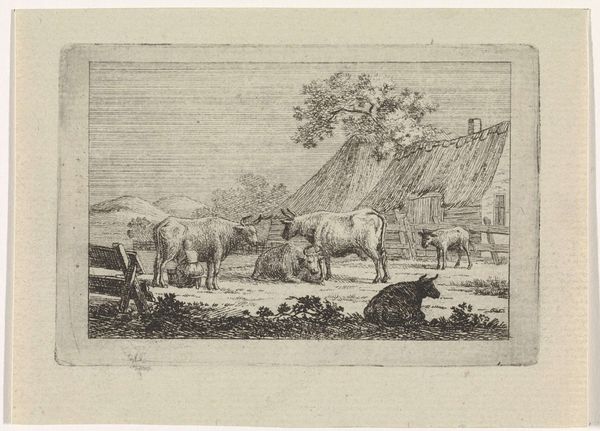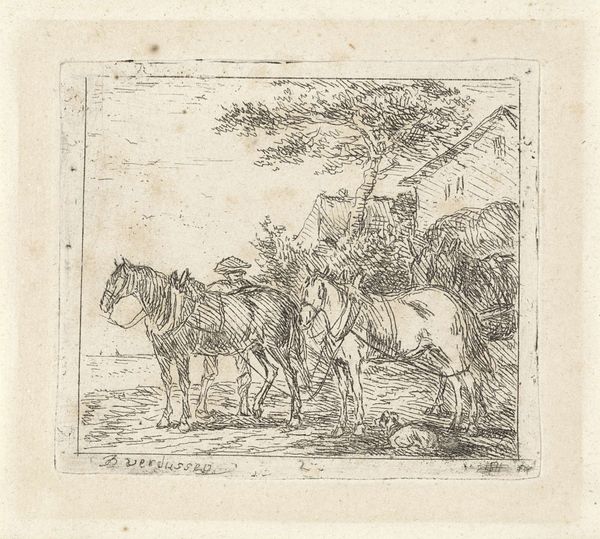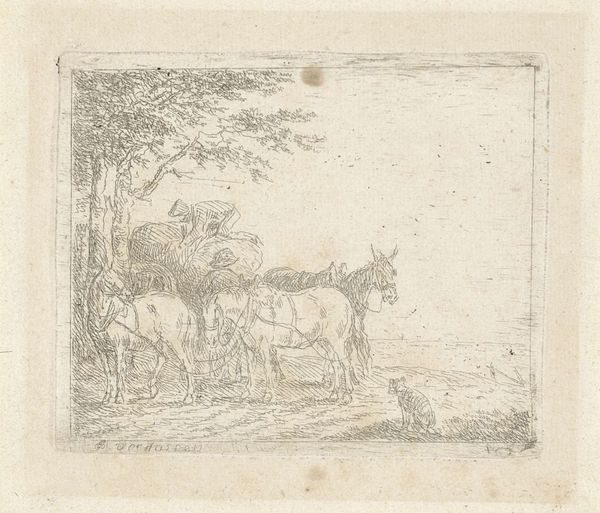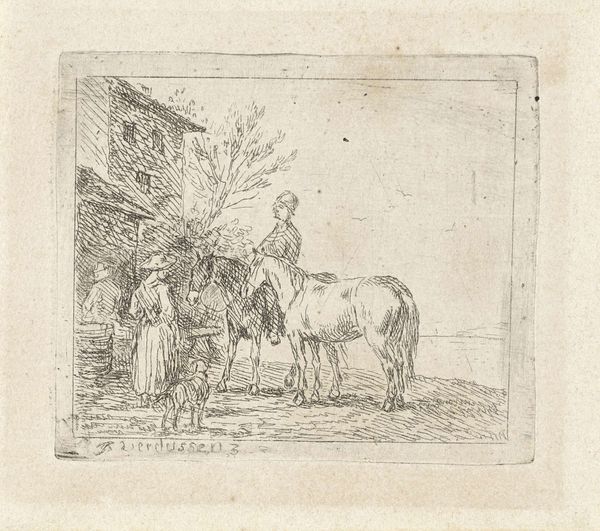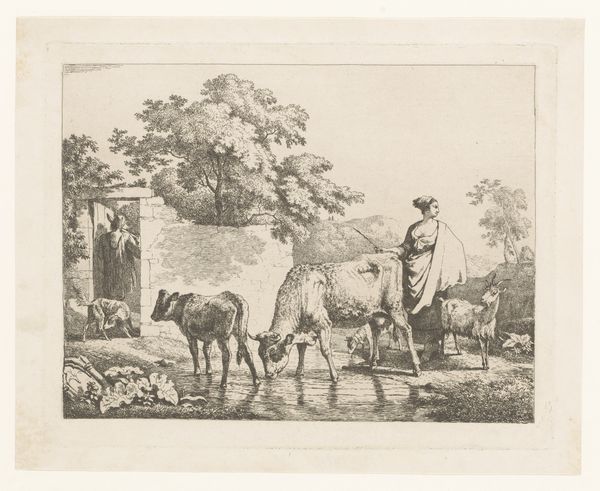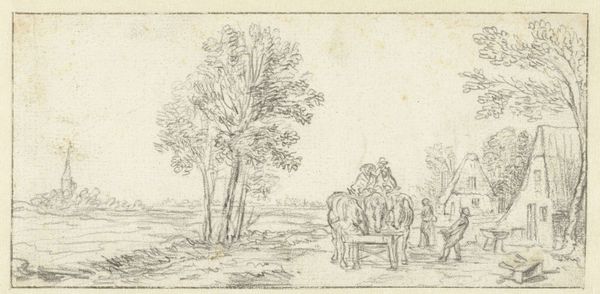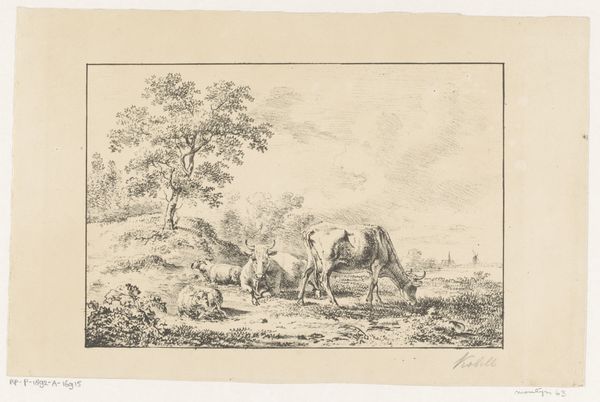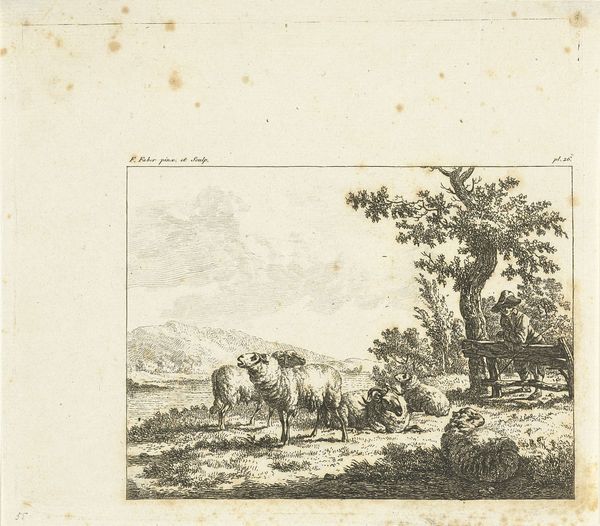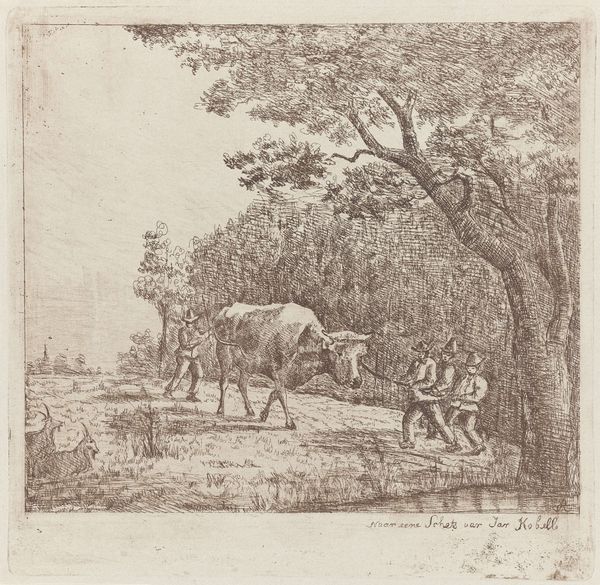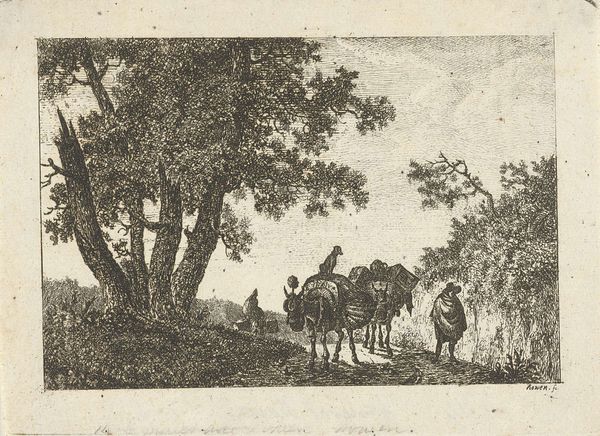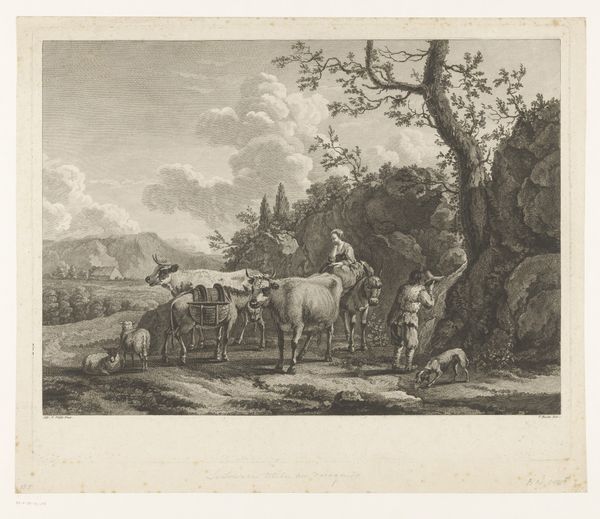
drawing, print, ink, engraving
#
drawing
#
baroque
# print
#
pen sketch
#
landscape
#
figuration
#
ink
#
line
#
genre-painting
#
engraving
#
realism
Dimensions: height 101 mm, width 121 mm
Copyright: Rijks Museum: Open Domain
Curator: "Twee mannen met hun paarden bij een drinkplaats," or "Two Men with their Horses at a Watering Place," an etching by Jan Peeter Verdussen, made sometime between 1710 and 1763, shows a seemingly everyday scene. It’s a glimpse into the world of rural life of the time. What are your first thoughts? Editor: My first thought is quiet simplicity. The delicate lines, the soft shading—it almost feels like a memory captured in ink. But there’s also a feeling of labor and reliance here, you know? A connection between humans, animals, and the land. Curator: Indeed. Verdussen was part of a long tradition of genre painting, capturing scenes of everyday life, and often these types of images circulated as popular prints, reflecting a growing interest in rural settings outside the urban centers. What's intriguing is the role of the horses here; beyond their functional use, they are also companions and symbols of status, reflecting how integral these animals were to Dutch society. Editor: It strikes me how subtly class and labor are depicted here. The scene feels picturesque, almost idyllic, but the presence of the watering place suggests reliance on a shared resource, maybe an access point within an inequitable feudal structure, even, rather than romantic ideas about Dutch painting that are promoted by institutions today. Do you see any specific sociopolitical meaning in how Verdussen chose to depict the men and horses together, though? Curator: Verdussen gives us very few visual clues. I would resist reading this image as politically charged without additional textual support. Rather, such genre scenes served to uphold traditional social values. However, we can use this scene to question the notion of leisure itself—how did ideas of labor and social hierarchies play out in leisure activities? Were those pleasures equally shared by all? I see it more as an observation on contemporary Dutch society, a snapshot of working life rather than necessarily social critique. Editor: I think that's a really helpful insight. It reminds us to be vigilant, examining how narratives, like Verdussen’s, both represent and shape the world around us, maybe in ways that serve particular audiences. We must think carefully about access and mobility, both within Verdussen's etching, but also about who has access to art institutions like the Rijksmuseum, where we stand now. Curator: Precisely. Verdussen’s work encourages us to not just see the past, but to consider how it influences our present perspectives. Editor: It certainly does for me, particularly within today’s socio-political climate!
Comments
No comments
Be the first to comment and join the conversation on the ultimate creative platform.
